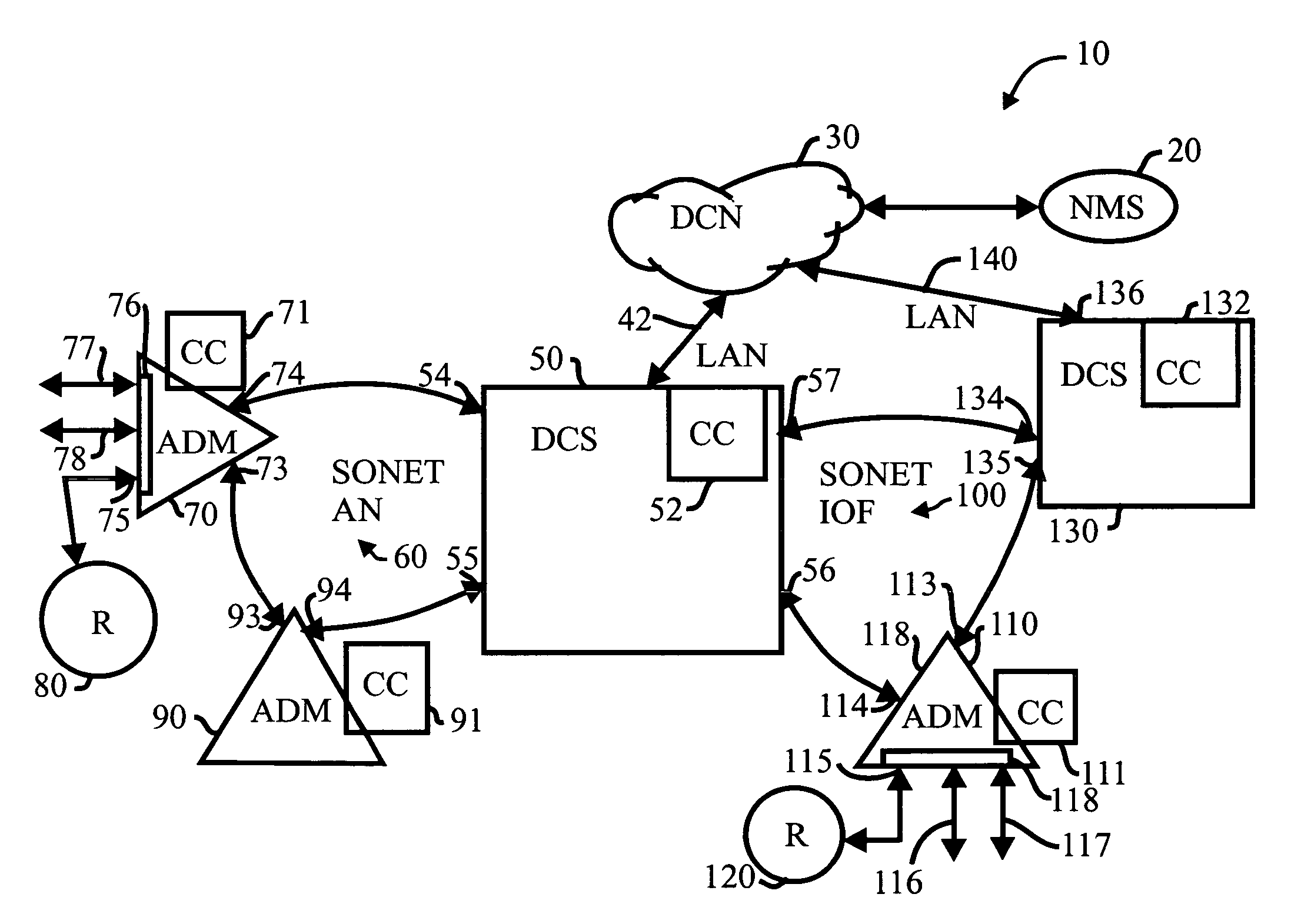Dynamic bandwidth management using signaling protocol and virtual concatenation
a bandwidth management and dynamic technology, applied in the field of communication networks, can solve the problems of inability of service providers to meet the need, inability and complex work to develop all that is required for the tmn
- Summary
- Abstract
- Description
- Claims
- Application Information
AI Technical Summary
Benefits of technology
Problems solved by technology
Method used
Image
Examples
Embodiment Construction
[0026]The preferred embodiments are explained in part by reference to the following papers that are incorporated by reference in their entirety into this specification:
[0027][1] G. Bernstein, “Some Comments on the Use of MPLS Traffic Engineering for SONET / SDH Path Establishment”, Internet Draft, draft-bernstein-mpls-sonet-00.txt, Work In Progress, March 2000.
[0028][2] E. Mannie, “MPLS for SDH Control”, Internet Draft, draft-mannie-mpls-sdh-control-00.txt”, Work In Progress, March 2000.
[0029][3] N. Jones, C. Murton, “Extending PPP over SONET / SDH, with Virtual Concatenation, higher order and low order payloads”, Internet Draft, draft-ietf-pppext-posvcholo-01.txt, December 1999.
[0030][4] W. Walker, B. Mack-Crane, S. Steele, “Control Plane Integration of Multi Layer Networks”, NFOEC 2000, August 2000.
[0031][5] J. Moy, “OSPF Version 2”, RFC 2328, Internet Engineering Task Force, April 1998.
[0032][6] D. Levandovsky, S. Makam, V. Sharma, “Physical Constraints Affecting Connectivity in the ...
PUM
 Login to View More
Login to View More Abstract
Description
Claims
Application Information
 Login to View More
Login to View More - R&D
- Intellectual Property
- Life Sciences
- Materials
- Tech Scout
- Unparalleled Data Quality
- Higher Quality Content
- 60% Fewer Hallucinations
Browse by: Latest US Patents, China's latest patents, Technical Efficacy Thesaurus, Application Domain, Technology Topic, Popular Technical Reports.
© 2025 PatSnap. All rights reserved.Legal|Privacy policy|Modern Slavery Act Transparency Statement|Sitemap|About US| Contact US: help@patsnap.com


